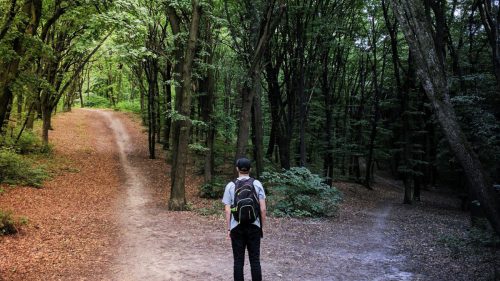

BreakPoint
Everyday Art
When you walk into the office of Tom Pratt, the president of Prison Fellowship, immediately you sense that this is no ordinary office. There's no imposing, executive-style desk. Instead the room is centered on a round table, small enough for easy conversation. On one side is a reading stand with a high perch; on the other, a reclining chaise. If you ask Tom about the unusual design, you discover that everything is carefully thought out. The round table sends a message that there is no hierarchy in the world of ideas. The perch and the chaise give opportunities for altering one's physical position, which refreshes the mind and stimulates creativity. It's rare to find an executive who has such a sensitive eye for artistic design. And office decor really is a form of art. Art is any expression of form and beauty that elevates and inspires. Some people say they're not interested in art. What they mean is they don't like to visit art museums and gaze at paintings. But the same people may sew their own clothes, cook gourmet meals, or renovate their homes. Our lives are permeated with art. When you think back through history, most cultures never had museums. For the ancient Hebrews or the South American Indians, art was embedded in the staples of ordinary life-in the pottery they made, the blankets they wove, the beads they strung. This is really a more biblical view of art, says Gene Veith in State of the Arts. A sense of beauty ought to be expressed in everything we do. After all, the first artist was God Himself. It was God who created the silvery beauty of the moon, the delicate netting of a grasshopper wing, the golden brown of a friend's eyes. When God made the world, He cared enough to make it beautiful. And if God cared, so should we. We are made in His image, and a sense of beauty is part of our nature. It's also part of the message we preach-whether we mean to or not. In Pollution and the Death of Man, Francis Schaeffer says he was once invited to lecture at a Christian school. The building was ugly and stark, staked out on bare ground. In sharp contrast a nearby bohemian community was surrounded by a rich profusion of trees and vines. What message were these Christians conveying about the God they worshipped? There are times, Schaeffer concludes, when planting a tree can be a form of evangelism. You see, our lives are meant to be a visible representation of the invisible God. If our schools or offices are dull and ugly-if they are filled with impersonal, mass-produced products-what an impoverished image of God we project. When Christians hear words like duty, we think of going to church, reading the Bible, giving money to Christian ministries. But a biblical concept of duty is much broader: We are called to do nothing less than live out the full image of God-so that the world might come to know the God who made the roses and the sunsets. A God of beauty.
07/10/95















